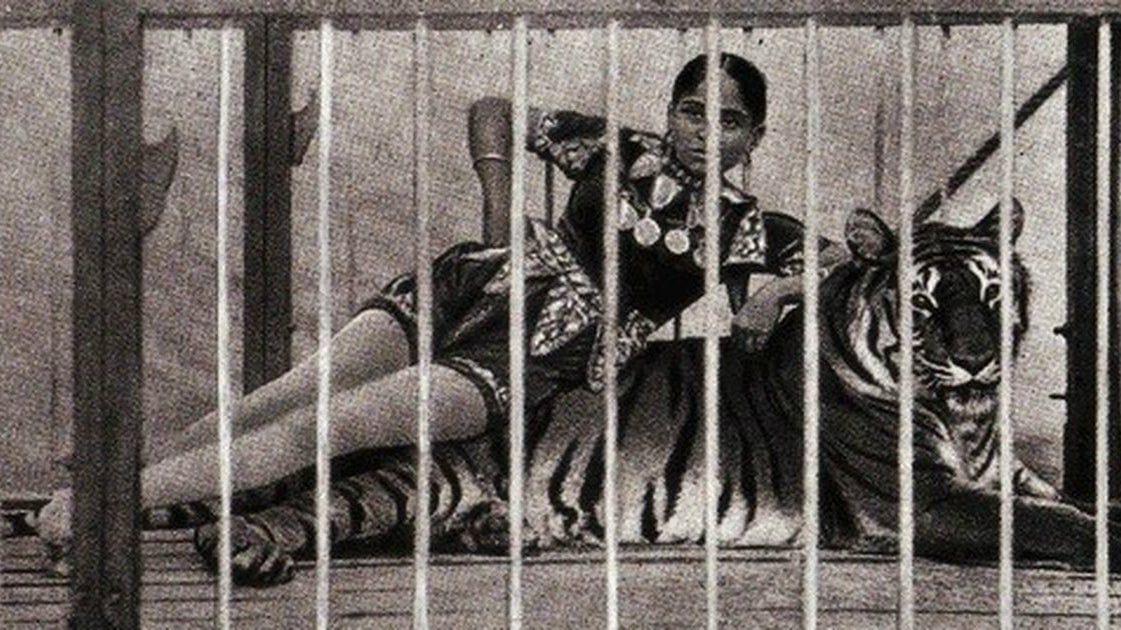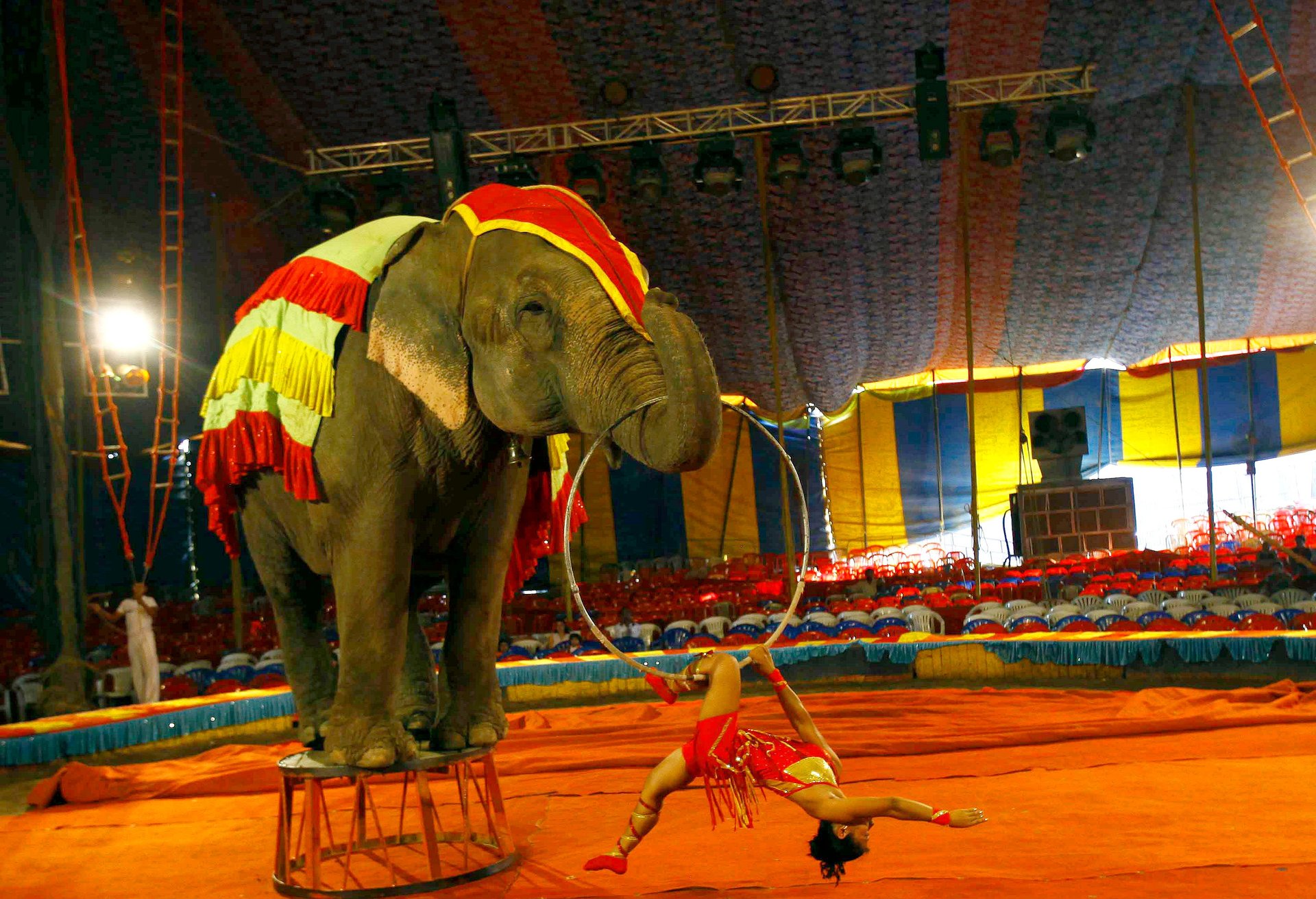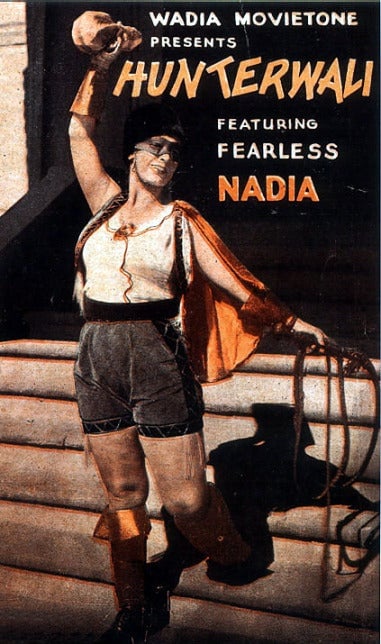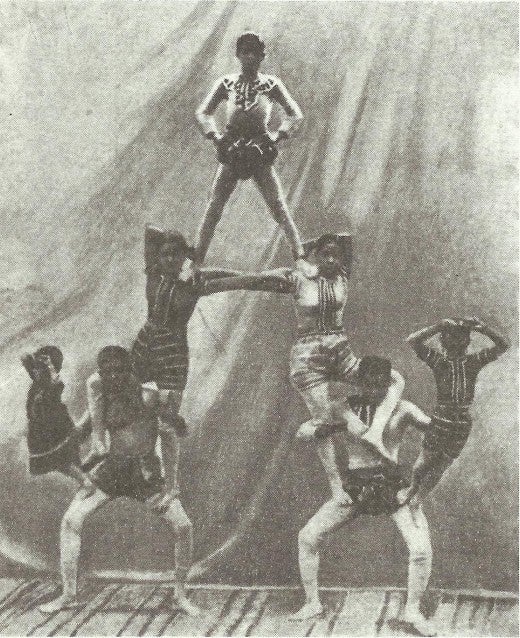The Bengali woman who challenged lions, tigers, and Hindu revivalists
The Indian circus has been in its death throes for the past 20 years, rendered irrelevant by the onslaught of films, television, the internet, and other forms of entertainment, as well as changing societal and governmental norms that have pushed it towards the margins, away from the open spaces of Indian city centres. The history of the Indian circus is marked by the stories of remarkable men and women, who came from extremely modest backgrounds and rose to dizzying heights of stardom.


The Indian circus has been in its death throes for the past 20 years, rendered irrelevant by the onslaught of films, television, the internet, and other forms of entertainment, as well as changing societal and governmental norms that have pushed it towards the margins, away from the open spaces of Indian city centres. The history of the Indian circus is marked by the stories of remarkable men and women, who came from extremely modest backgrounds and rose to dizzying heights of stardom.
According to Shreedharan Champad, veteran journalist and retired circus performer, there were several reasons for the decline of the Indian circus: Gymnasts needed to train from an early age when their bone structure was still developing, but if the same gymnast performed as a minor, earning money from the performance would be illegal, under the Protection against Child labour Reform Act.
Champad also claims that big circuses took extremely good care of their animals, but in 2013 wild animals were banned from being shown at circuses. (The acceptance of caged animals performing has slowly waned all over the world, with the notable exception of Germany, where you can still see exotic animals perform and where the regulations regarding animal safety and welfare are very strict).

Pitching the tent
But for about a 100 years, the circus was one of the most popular and profitable entertainment ventures of the subcontinent. It not only borrowed from existing traditions, but also left an indelible mark on the new performative ventures in modern India. The origins of the circus industry, like most stories of origin, are beset with claims and counter claims.
Three geographical regions around the late 19th century were the breeding grounds for early circuses, owned and operated by Indians: The Bombay Presidency, the Bengal Presidency and the State of Travancore (now Kerala). Touring performers constantly traveled to and fro from India, juggling, performing magic tricks and dancing in the halls and exhibitions of Europe (Ramoo Samee, a juggler, was one of the first people from the sub-continent to perform at the Albert Hall, during the first half of 19th century).

The earliest examples of international circus companies touring India, are from around the 1870s—Wilson’s Great World Circus and Chiarini’s Great Italian Circus. Vishnupant Chatre, known as the father of the Indian circus, is believed to have been inspired by a challenge thrown to him by an equestrian in Chiarini’s troupe—this, apparently, is how the first Indian circus came into being, at the Bombay Presidency.
The stories which emerged from Bombay, under Chatre, were of chance encounters and daring challenges. Almost simultaneously, in Bengal, a daring man named colonel Suresh Biswas, who ran away from home to become a wrestler and animal trainer in Europe, was believed to be the founder of the Great Bengal Circus Company and is credited with defying the colonial stereotype of Bengali effeminacy. The beginning of a circus training school in Kerala is also believed to have initiated the first circuses from there, such as the Malabar Circus company, started by Periyali Kannan.
The starlet, the mother and the man
But the real stars of the Indian Circus were its women. Before Fearless Nadia, there was Sushila Sundari (Sushila the beautiful), a Bengali woman who challenged lions, tigers, and the Hindu revivalists.
A newspaper clipping from the Englishman, dated November 21, 1901 read:
“What impresses the observer most, are the performances of Miss Sushi with the two Royal Bengal Tigers. Hindu women are notoriously most timid but in the person of Sushila, there is one who, with the utmost fearlessness, enters the den of two apparently savage beasts, without either whip or any kind of defensive appliance, and goes through her performance with these animals with a nerve and fearlessness really startling to witness.”
Sushila Sundari, born close to the notorious red light district of Rambagan in Calcutta during the 1880s, went on to become the first and most famous female lion tamer and bare back horse rider in the history of the Indian circus. Sushila was trained by the first Bengali circus ringmaster and proprietor, Priyanath Bose. Her stint in the circus involved two major acts, the one that petrified and enthralled audiences was where she casually fought two royal Bengal tigers and a lion, and the second one saw her buried alive for more than 10 minutes under four feet of sand.
The Moslem Chronicle, writing about Sushila in 1902, had this to say:
“Who ever could think before that a saree and slipper wearing timorous Bengali lady whose face is seldom seen outside the limits of the Zenana can make herself bold enough to coax and play with two large man-eaters like domestic dogs. Thanks to the skill of Professor Bose who has shown the world that smews(sic) of the Bengali ladies who are known to be so delicate are capable of performing such wonderful feats as will unnerve the bravest of the brave.”
Sushila’s life, at the Great Bengal Circus tent, was a constant source of gossip for the press in Calcutta, and often reached the foreign shores of England. She was sometimes connected with another star performer of the circus, Magician Ganapati, who was heralded as the Houdini of the East. Such was Sushila’s charm over the magician, that when she refused to accompany him to another circus group, the magician seemed to have lost all his powers.
Mrinmoyee, another performer and a colleague of Sushila, from the same Rambagan neighbourhood, was a discovery made by Bose, the circus manager. From the beginning, Mrinmoyee’s image on the circus’ posters was coded with the image of the Mother Goddess riding a lion. Popularised as “the mother who is no longer in chains but the free ‘Mother India’ controlling beasts as her destiny and power has ordained her” in the Hindu Patriot in 1906, she was the star performer of the show.
Mrinmoyee’s public image was the opposite of the reality she endured at the circus. She was accommodated in the worst circus wagon, and when her husband died, she was forced to perform the dietary and social regulations of a traditional Hindu widow, although in public, she remained the eternally powerful mother.
In her pioneering book, Sexuality, Obscenity, Community: Women, Muslims, and the Hindu Pubic in Colonial India, historian Charu Gupta writes: “Female icons, particularly of the mother as a national symbol, have been shown to coexist uneasily within masculinist ideologies of the nation, so that women occupy an unstable position within the imagined community”.
The imagined community of the audience at the circus was served a glorious, maternal and powerful Mrinmoyee to maintain profit, but at the same time, she was powerless when it came to following the restrictive traditions and practises of widowhood.
Working towards the end of the 1930s, in Lyallpur, Rukmabai emerged as one of the greatest circus managers and animal trainers. Her circus troupe, Rukmabai’s Grand Circus, was one of the few circuses that faced the onslaught of anti-colonial, nationalist movements gathering momentum at that point of time. Rukmabai earned the circus title of a “Professor,” which for a long time, had been reserved for men. She managed to gather a group of profitable circus performers from all over India and successfully ran the company for at least four years.
The construction of Rukmabai within public imagination was riddled with contradictions. In a pamphlet issued by a Hindu revivalist organisation of Uttar Pradesh in 1935, titled ‘Native women and their Regeneration’, she is taunted thus:
Not everyone can be the Queen of Jhansi, wielding swords atop horses. Todays women need to show their fighting husbands by being devoted housewives protecting the hearth. She who tumbles and falls and plays with animals in theatre and all as such, they bring nothing but shame to the Hindu women and our great Bharat.
But the vernacular press, such as the Bangali Biranganader Itihash, from Calcutta in the 1930s, praised her as the “Queen of Jhansi who also runs a tight ship.” In her posters, still on display at the Sir Anthony Hippisley Coxe Circus Collection, Victoria and Albert Museum, London, Rukmabai was publicised as the “Whole India (sic) lady Hercules.”

Caught within the cultural and political turmoil of the subcontinent, like Mrinmoyee or Sushila, Rukmabai’s image was forged only through the prism of national construction. Her ventures in the circus, however, were quite profitable. During the early years of her career, Rukmabai had worked as a cleaner of the stables. Her physical strength, noticed by a provincial circus manager led to her being offered the position of a strong(wo)man at the circus. When she was introduced into the arena, her massive physical gait was visualised as that of a man, and she captivated the audience with her feats of physical strength.
As the story goes, her lack of capital prevented Rukmabai from operating her troupe the way she wanted, and local moneylenders refused to loan her money because she was a woman. She approached an European named Wallace. When Wallace met her, he thought that Rukmabai had sent her secretary (whom he exclaimed, “was quite the big fellow”). Impressed by the secretary’s knowledge of the circus industry, Wallace agreed to become a partner in Rukmabai’s circus.
Women in all public spaces, events and narratives were either overshadowed or consumed by their men. However, the archives often throw up snippets of how these remarkable women changed the ideas of aesthetics, morality and economics within the circus. The inclusion of these stories reminds us of the gender fluid nature of the circus space and industry, which made it possible for people at the margins to manipulate their way into the centre, and to locations of power. By playing up to the stereotypes (and not always subverting them) individuals like Rukmabai made the circus a transgressive and ambiguous landscape.
This post first appeared on Scroll.in. We welcome your comments at [email protected].